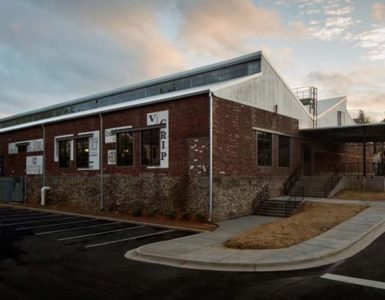
We arrive in Christchurch almost exactly a year after a devastating earthquake shattered the city’s central business district, and what we see there surprises us.
The drive from Akaroa (where cruise ships now dock) into Christchurch is one of those jaw-dropping scenic routes. The road curls from left to right, winding back and forth, twisting itself into hairpin curves and unexpected switchbacks. The shoulder drops away, leaving a sheer rock face on one side of the car and a steep plunge into a distant valley floor on the other. All around us are undulating hills, taller than they are wide, dotted with sheep and cattle that look no larger than raisins.
We pass through Lyttleton, where the cruiseships used to dock before the quake. The once bright little main street is largely boarded up. A coffeeshop has reopened in the shell of an old corner store, but most of the shops are empty, hollowed out, locked, dark. Our driver tells us there’s not even a grocery store in town; locals drive to Christchurch to get necessities.
On the outskirts of Christchurch, the signs of last year’s quake are more subtle. Here, a rock wall has collapsed, burying the sidewalk in a spray of boulders and cracked mortar. There, concrete stairs lead up to a vacant lot where a community church used to be.
In the heart of the city, we find ourselves on the perimeter of the Red Zone. The Zone is like something out of a science fiction movie: an entire downtown area sealed off by a nine-foot chainlink fence. We crossed a concrete footbridge riddled with massive cracks, follow a path alongside a stream, and join a small crowd of tourists to peer through the fence and see what can be seen of the quake’s aftermath.
A surprising number of skyscrapers — hotels and office towers — are still standing. We learn that many of these have already been removed, and that most of the ones we can see today are doomed. This comes as a shock, since many of the buildings, as far as we can see, look fine. But as it turns out, the quake shattered and mangled their concrete foundations … so the entire structure must be demolished.
Worse, the damage is capricious and unpredictable. This building’s foundations will be mulched, while the tower next door will be in perfect shape. As a result, the city can’t just march in and dynamite the doomed buildings; instead, they have to be dismantled piece by piece, from the roof level down. As a result, deconstruction could take years.
The most heartbreaking thing we see is the Cathedral. Its left- and right-hand towers collapsed in the quake, and the huge rose window centered above the Cathedral entrance fell inward, into the sanctuary, taking most of the facade with it. Today, a year later, the site is a mess: a house of worship, once the anchor of a vibrant public square, now reduced to a ruin with a gaping black maw.
But even here, in the middle of this apocalyptic landscape, there’s hope. The Red Zone is smaller than it was, and the fenced-in area is shrinking, slowly but surely.
At the Public Mall, where so many buildings collapsed and so many people died, a vibrant new district is springing up. Railroad boxcars, painted bright colors, have been retrofitted with windows and glass storefronts, transforming them into grocery stores, clothing shops, bookstores, and restaurants. The streets are packed with people shopping and strolling — and while some are tourists, many are locals, excited about the rebirth of their city.
I wander into one shop: a British grocery, composed of three boxcars fused end-to-end. The front is all glass; the interior is painted a stark art-gallery white. Inside, the shelves are packed with all manner of UK goodies: marmalades, shortbreads, even Queen Anne dark chocolate eggs (an Easter favorite).
I strike up a conversation with the owner, who tells me his store — in the family for more than 150 years — was in the heart of the Red Zone. It was a Christchurch icon, one of those authentic groceries with towering shelves accessible from rolling ladders. As the proprietor, he knew exactly where every single item was filed away, and people marveled at his ability to calculate their bill, plus taxes, in his head.
The new shop is brighter and smaller, but still a delight. And, as a proud owner of a box of dark chocolate Queen Anne Easter eggs, I can verify that the owner can still calculate sums in his head faster than most people could punch them into a cash register. “Come back next year,” he tells me, as I walk out. “We’ll still be here.”
As I walk away, I look down at the warped and buckled pavement. There, springing up from the from the cracks in the concrete, tiny violet and yellow flowers stretch upward, straining to reach the sky.


Add comment